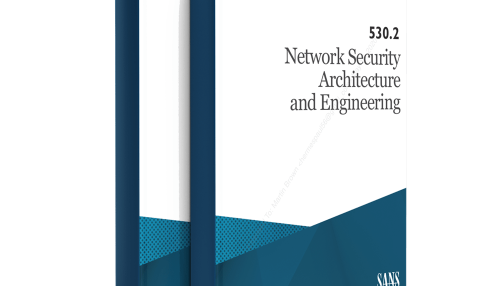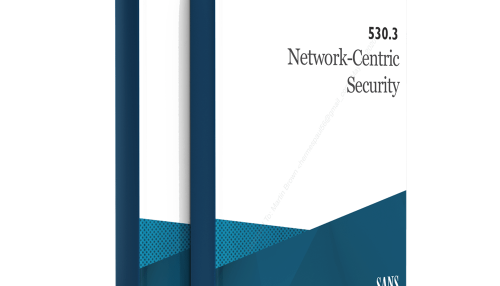504.2 – Computer and Network Hacker Exploits Part 1
فهرست مطالب کتاب 504.2 – Computer and Network Hacker Exploits Part 1:
Purpose of This Course
General Trends
Step 1: Reconnaissancе
Open-Source Intelligence (OSINT)
LAB 2.1: OSINT with SpiderFoot
DNS Interrogation
Website Searches
Search Engines as Recon Tools
Maltego Recon Suite
Web-Based Recon and Attack Sites
Step 2: Scanning
War Dialing
Step 2: Scanning (Continued)
War Driving
LAB 2.2: Wireless LAN Discovery
Network Mapping with Nmap
Port Scanning with Nmap
LAB 2.3: Nmap
Evading IDS/IPS
Vulnerability Scanning with Nessus
LAB 2.4: Nessus Scan Analysis
SMB Sessions
LAB 2.5: SMB Sessions
504.3 – Computer and Network Hacker Exploits Part 2
فهرست مطالب کتاب 504.3 – Computer and Network Hacker Exploits Part 2:
Physical Access Attacks
Multipurpose Netcat
LAB 3.1: Netcat’s Many Uses
Network Sniffing
LAB 3.2: ARP and MACAnalysis
Hijacking Attacks
LAB 3.3: Responder
Buffer Overflows
Metasploit
Protocol and File Parser Problems
Endpoint Security Bypass
LAB 3.4: Metasploit Attack and Analysis
504.4 – Computer and Network Hacker Exploits Part 3
فهرست مطالب کتاب 504.4 – Computer and Network Hacker Exploits Part 3 :
Step 3: Exploitation (Continued)
Password Attacks Overview
Understanding Password Hashes
Password Cracking
LAB 4.1: John the Ripper
LAB 4.2: Hashcat
Pass-the-Hash Attacks
Worms and Bots
LAB 4.3: BeEF for Browser Exploitation
Web App Attacks
Open Web Application Security Project (OWASP)
Account Harvesting
Command Injection
SQL Injection
Cross-Site Scripting
LAB 4.4:Cross-Site Scripting and SQL Injection
Attacking Web App State Maintenance
Denial of Service
DNS Amplification Attacks
Distributed Denial-of-Service Attacks
LAB 4.5: Counting Resources to Evaluate DoS Attacks
504.5 – Computer and Network Hacker Exploits Part 4
فهرست مطالب کتاب504.5 – Computer and Network Hacker Exploits Part 4:
Step 4: Keeping Access
Application-Level Trojan Horse Suites
Virtual Network Computing Overview
Common Remote Control Backdoor Capabilities
Wrappers and Packers
Memory Analysis
LAB 5.1:Windows Analysis with Rekall
Rootkit Techniques
Kernel-Mode RootkitTechniques
Rootkit Examples
LAB 5.2: Fun with Rootkits
Covering Tracks In Linux Ln and UNIX
Hiding Files in UNIX
UNIX Log Editing Ed
nting E Editing
LAB 5.3: Shell HistoryAnalysis
Covering Tracks in Windows
Hiding Filles in NTFS
Alternate Data Streams in NTFS
LAB 5.4: Alternate Data Streams
Log Editing
505.1 – Learn PowerShell Scripting for Security
فهرست مطالب کتاب 505.1 – Learn PowerShell Scripting for Security:
Today’s Agenda
On Your Computer
What Is Windows PowerShell?
What Is PowerShell Core?
Tips for Executing Commands
Getting Help in PowerShell
Aliases
Objects, Properties, and Methods
Get-Member (Alias: gm)
Drives and Environment Variables
Your Profile Script(s)
Functions, Cmdlets, and Modules
The PowerShell Gallery
Today’s Agenda
Exporting, Importing, and Converting Object Data
On Your Computer
Select-Object (Alias: Select)
Where-Object (Aliases: Where, ?)
Arrays: Like In-Memory Database Tables
Capturing Output and File Contents to an Array
Search Event Logs
Hashtables
Splatting
Today’s Agenda
On Your Computer
Flow Control: If-ElseIf-Else
Flow Control: While
Flow Control: Do-While
Flow Control: ForEach and For
Flow Control: Switch
Today’s Agenda
On Your Computer
Functions
Creating a New Function
Passing in Named Parameters to a Function
Switch Parameters to Functions
Assigning Default Values to Function Parameters
Passing Arguments into Scripts
Typical Script Layout
Congratulations!
Appendix A: Becoming a Domain Controller
Appendix B: What Is the .NET Framework?
Appendix C: Creating COM Objects
Appendix D: Operators and Strings
Appendix E: Error Handling
Appendix F: Parsing Nmap XML Output
Appendix G: Installing Windows Server
506 – Hardening Linux/Unix Systems – Sections 1–3
فهرست مطالب کتاب Hardening Linux/Unix Systems:
ندارد
51 Tips for Social Selling on LinkedIn and Beyond
فهرست مطالب:
Introduction to Social Selling
Social Selling Tips to Drive Sales for Your Business
LinkedIn Spotlight: Top Tips to Drive Sales on the #1 Social Selling Platform
The Power of Your Social Selling Index Score
Tips for Using Sales Navigator
Instagram: Not Just a Personal Social Platform
Taking Your Social Selling Efforts to TikTok
Conclusion
511.1 – Current State Assessment, SOCs, and Security Architecture
فهرست مطالب کتاب 511.1 – Current State Assessment, SOCs, and Security Architecture:
Course Overview
EXERCISE: Initial Configuration and Connection
Current State Assessment
Adversarial Dominance
Traditional Attack Techniques
Traditional Cyber Defense
EXERCISE: Detecting Traditional Attack Techniques
Modern Attack Techniques
Client-Side Attack Vectors…
Client-Side Targets.
Post-Exploitation
Modern Cyber Defense Principles
530.2 – Network Security Architecture and Engineering
فهرست مطالب Network Security Architecture and Engineering:
Layer 3 Attacks and Mitigation
Switch and Router Benchmarks
EXERCISE: Auditing Router Security
Securing SNMP
Securing NTP
Bogon Filtering
Blackholes and Darknets
EXERCISE: Router SNMP Security
IPv6
IPv6 Misconceptions
Securing IPv6
EXERCISE: IPv6
Layer 3/4 Stateful Firewall
Web Proxy
SMTP Proxy
EXERCISE: Proxy Power
2 Summary
530.3 – Network-Centric Security
فهرست مطالب کتاب 530.3 – Network-Centric Security:
Next-Generation Firewall (NGFW)
Network Security Monitoring (NSM)
EXERCISE: Architecting for NSM
EXERCISE: Network Security Monitoring
Malware Detonation
Securing Remote Access
Jump Boxes
Distributed Denial-of-Service (DDOS) Protection
Network Encryption
EXERCISE: Encryption Considerations
530.4 – Data-Centric Security
فهرست مطالب کتاب 530.4 – Data-Centric Security:
Data-Centric Security
Web Application Firewalls
EXERCISE: Securing Web Applications
Database Monitoring and Controls
Access Controls
Data Encryption
File Classification
EXERCISE: Discovering Sensitive Data
Data Loss Prevention
Enterprise Data Control
Mobile Device Management
Private Cloud Security
Public Cloud Security
Containers
EXERCISE: Secure Virtualization
530.5 – Zero Trust Architecture Addressing the Adversaries Already in Our Networks
فهرست مطالب کتاب 530.5 – Zero Trust Architecture Addressing the Adversaries Already in Our Networks:
Zero Trust Architecture
Credential Rotation
Securing Traffic
EXERCISE: Network Isolation and Mutual Authentication
Host-Based Firewalls
Network Access Control (NAC)
Segmentation Gateways
Security Event Information Management (SIEM)
EXERCISE: SIEM Analysis and Tactical Detection
Log Collection
Audit Policies
Host Hardening
Patching
Tripwires and Red Herring Defenses
EXERCISE: Advanced Defense Strategies












